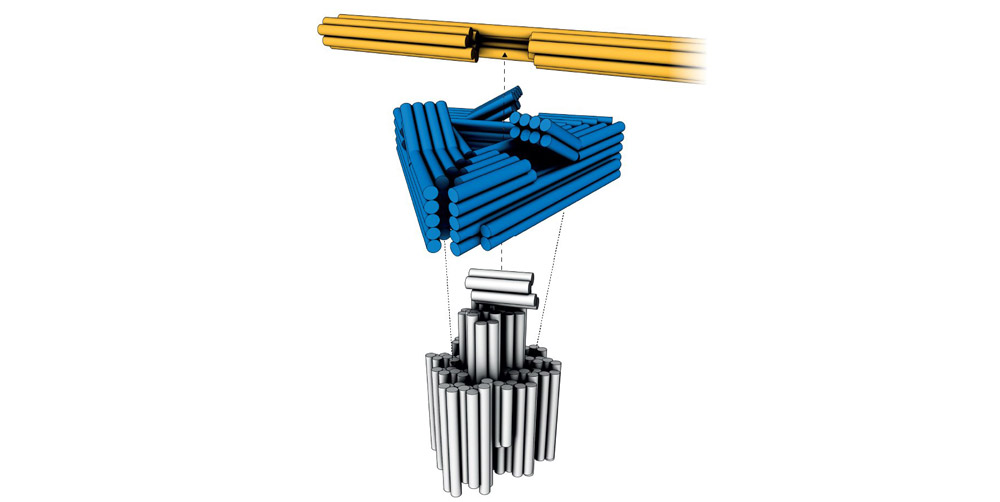Genetic material as a driver: For the first time, scientists have transformed a DNA molecule into an electric motor on a nanoscale. To do this, they assembled several strands of DNA in such a way that they formed a base with a rotating arm. If voltage is applied now, the DNA rotor begins to move and spin in one direction, the researchers report in the journal Nature. The new nanoelectric actuator opens the possibility of driving nanoprocesses and chemical reactions in new ways.
Engines have been keeping humanity out of action for centuries now. Their main task is to convert different forms of energy into movement – even on the smallest scale. there now nanomotorsjust this One nanometer in size They and those who DNA construction of the genetic molecule had become. However, the latter has so far only been able to generate motion from chemical energy – not from electrical energy.
Origami with molecules of genetic material
A team led by first author Anna Katharina Bohm from the Technical University of Munich has built an efficient nanoscale electric motor made of DNA. To assemble the molecular motor, the scientists used what is known as DNA origami. With this construction method, several long single strands of genetic material serve as the primary structure, to which complementary DNA sections adhere. The sequence of molecules is chosen in such a way that it produces the desired structures of attachments and folds.
“We have worked in this way for many years and can now develop very precise and complex organisms such as molecular switches and hollow bodies that can capture viruses. Senior author Hendrik Dietz of the Technical University of Munich explains: “If you put the DNA strands together with the corresponding sequences in solution, things clump together all by herself”.
base, platform, swivel
The researchers used origami technology to build three components of the new DNA engine. It is based on a base about 40 nanometers high, which is fixed to a glass plate with the help of polyethylene glycol. A 13-nm-thick DNA platform is then attached to the foot, and the base is attached to a 500-nm rotating arm made of DNA. The structure of the intermediate element is responsible for the function of the motor.
Basically, the DNA engine acts as a kind of ratchet. Obstacles in the idler limit the rotation of the swivel arm. Without a definite power source, the moving part moves randomly and uncontrollably, since it is affected only by collisions with solvent molecules. However, once AC voltage is applied across two electrodes, the arm rotates in a targeted and continuous manner in the desired direction. Finally, scientists can influence the speed and direction of rotation via field direction, frequency and amplitude of the voltage.
Technically unrivaled skills
“The new engine has unparalleled mechanical capabilities,” says co-author Ramin Golestanian of the Max Planck Institute for Dynamics and Self-Organization in Göttingen. “It can achieve a torque in the order of 10 pN. It can generate more energy per second than is released by splitting two ATP molecules.
Scientists hope that the engine they have developed will perform specific technical tasks in the future, such as converting electrical energy into chemical energy. We can use it to drive chemical reactions along the lines of ATP production lines. For example, surfaces can be densely coated with such actuators,” explains Dietz. “Then you add the raw materials, apply a little AC power, and the actuators produce the desired chemical compound.” (Nature, 2022; doi: 10.1038/s41586-022-04910-y)
Source: Technical University of Munich

“Social media evangelist. Baconaholic. Devoted reader. Twitter scholar. Avid coffee trailblazer.”







More Stories
PlayStation 5 firmware update adds Community Game Assist feature – SHOCK2
How mirrors in space can increase solar energy production on Earth
Final Fantasy XVI: The next installment in the series is supposed to be very different